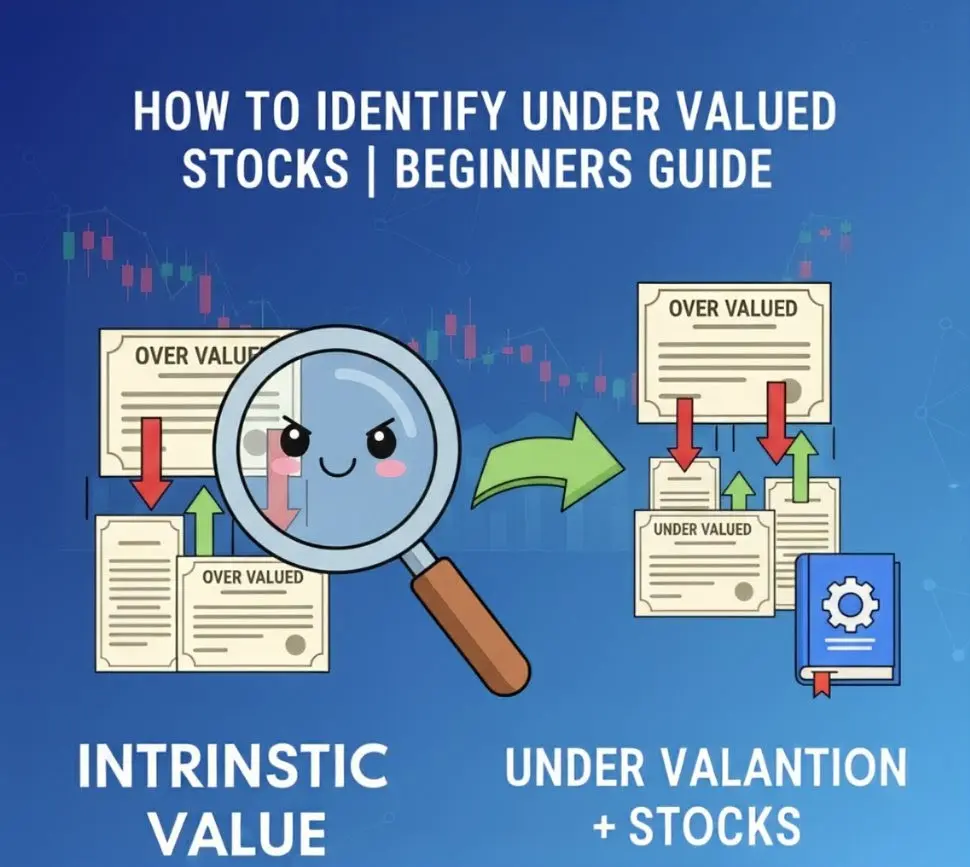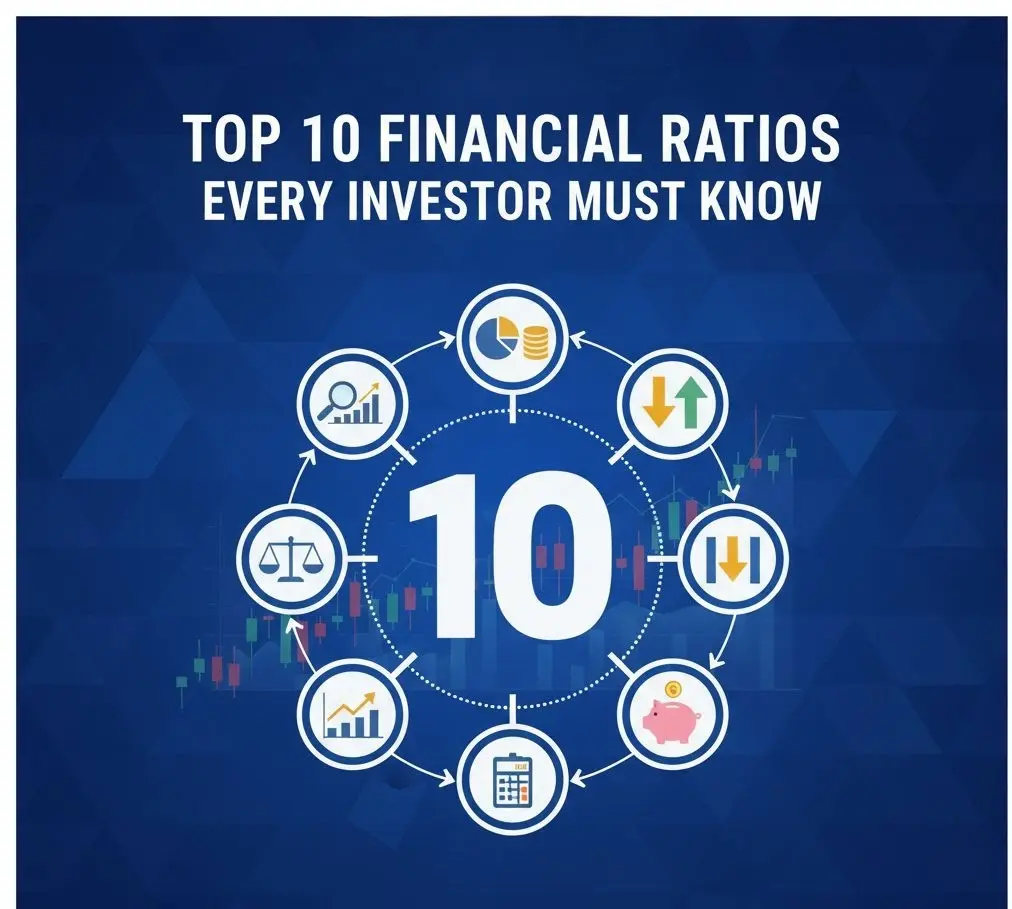

Basics of Stock Market
The stock market is a platform where buyers and sellers trade shares of publicly listed companies. Think of it as a marketplace for company ownership, where prices are determined by supply and demand dynamics.
A stock (or share) represents fractional ownership in a company. When you buy a stock, you become a part-owner of that company with rights to potential dividends and capital appreciation.
Primary Market: Where companies issue new shares through Initial Public Offerings (IPOs).
Secondary Market: Where investors trade existing shares among themselves through stock exchanges.
Raise capital for expansion, enhance visibility, provide exit for early investors, and use shares for acquisitions
Wealth creation through capital appreciation, dividend income, portfolio diversification, and hedge against inflation
Retail investors, institutional investors (FIIs, DIIs), brokers, market makers, and regulators
💡 Key Stock Market Concepts
Market Capitalization: Total value of a company's outstanding shares (Share Price × Total Shares)
Bull Market: Rising market trend with investor optimism
Bear Market: Falling market trend with investor pessimism
Volatility: Degree of price fluctuations in the market
How Indian Stock Market Works
The Indian stock market operates through a well-structured ecosystem involving various participants and processes:
Trading Mechanism
Indian stock markets operate on a fully automated electronic trading system with the following key features:
Normal: 9:15 AM-3:30 PM
Post-close: 3:30-4:00 PM
Limit Orders
Stop-loss Orders
Bracket Orders
(Trade date + 1 day)
Funds and shares
exchanged next day
Market Participants
Trading through brokers
Demat account required
PAN card mandatory
Domestic Institutional Investors (DIIs)
Mutual Funds
Insurance Companies
Depository Participants
Registrar & Transfer Agents
Clearing Corporations
Trading Process Flow
Step-by-Step Trading Process:
- Open Demat and Trading accounts with a SEBI-registered broker
- Transfer funds to your trading account
- Place buy/sell orders through trading platform
- Order matched by exchange's electronic system
- Trade confirmation received
- Settlement through depositories (T+1 cycle)
- Shares credited/debited from Demat account
Brief History of Indian Stock Market
Birth of BSE
Bombay Stock Exchange (BSE) established as "The Native Share & Stock Brokers Association" under a banyan tree in Mumbai
Securities Contracts Regulation Act
Government regulation of stock exchanges begins, providing legal framework for securities trading
SENSEX Launched
BSE introduces SENSEX (Sensitive Index) with base year 1978-79 and base value of 100
Harshad Mehta Scam & SEBI Act
Securities scam exposes market vulnerabilities. SEBI given statutory powers to regulate markets
NSE Established
National Stock Exchange (NSE) starts operations, introducing electronic trading in India
NIFTY 50 Index Launched
NSE introduces NIFTY 50 index with base year 1995 and base value of 1000
Dematerialization Begins
NSDL established, starting the transition from physical share certificates to electronic holdings
Derivatives Trading
Index futures introduced, followed by index options and stock options, expanding market instruments
Understanding NIFTY, SENSEX, NSE and BSE
📊 Stock Exchanges vs Market Indices
Stock Exchanges: Platforms where trading happens (NSE, BSE)
Market Indices: Indicators measuring market performance (NIFTY, SENSEX)
National Stock Exchange (NSE)
Established in 1992, NSE is India's largest stock exchange by trading volume. It revolutionized Indian capital markets by introducing:
- Fully automated electronic trading system
- Nationwide trading network
- Transparency in price discovery
- Derivatives trading in India
Bombay Stock Exchange (BSE)
Established in 1875, BSE is Asia's oldest stock exchange. Key highlights:
- First exchange to get permanent recognition in 1956
- Largest number of listed companies in India
- Pioneer in introducing equity derivatives
- First to launch US$ version of SENSEX
NIFTY 50 Index
NIFTY 50 is the flagship index of NSE, representing the performance of 50 large-cap companies across 13 sectors:
- Base year: 1995, Base value: 1000
- Market capitalization weighted index
- Covers ~65% of NSE's free float market cap
- Reviewed semi-annually for rebalancing
SENSEX Index
SENSEX (Sensitive Index) is BSE's benchmark index comprising 30 well-established companies:
- Base year: 1978-79, Base value: 100
- Free-float market capitalization weighted
- Represents ~45% of BSE's total market capitalization
- Considered India's most tracked stock market index
| Feature | NSE | BSE |
|---|---|---|
| Establishment | 1992 | 1875 |
| Benchmark Index | NIFTY 50 | SENSEX |
| Market Cap (approx) | ~₹250 lakh crore | ~₹240 lakh crore |
| Listed Companies | ~2,000 | ~5,000 |
| Trading Volume | Higher | Lower |
| Index Base Year/Value | 1995 / 1000 | 1978-79 / 100 |
Listing of Companies on Stock Exchanges
Getting listed on a stock exchange is a significant milestone for companies. Here's how the process works:
Eligibility Criteria
Track record: 3 years
Net worth: ₹15+ crore
Public shareholding: 25%
Track record: 3 years
Net worth: ₹5+ crore
Post-issue cap: ₹25 crore max
IPO Process
Initial Public Offering Steps:
- Due Diligence: Company appoints merchant bankers for preparation
- Draft Prospectus: File DRHP with SEBI for approval
- SEBI Review: Regulatory scrutiny and observations
- Price Band: Determine issue price through book building
- Marketing: Roadshows and investor presentations
- Subscription: Public bidding for shares
- Allotment: Share allocation to investors
- Listing: Shares begin trading on exchange
Post-Listing Requirements
Annual reports
Material events
Shareholding pattern
Audit committees
Related party transactions
Shareholder meetings
LODR requirements
Insider trading norms
Takeover code
Role of SEBI in Stock Market
Securities and Exchange Board of India (SEBI) is the regulatory authority for Indian securities market. Established in 1988 and given statutory powers in 1992 through the SEBI Act.
Key Functions of SEBI
Prevent fraudulent practices, ensure fair trading, educate investors, and handle grievances
Regulate stock exchanges, brokers, sub-brokers, and other market intermediaries
Promote and develop securities market, encourage self-regulatory organizations
Frame rules and regulations, issue guidelines, and amend existing frameworks
Major SEBI Regulations
| Regulation | Purpose | Impact |
|---|---|---|
| Prohibition of Insider Trading | Prevent unfair advantage using unpublished price-sensitive information | Enhanced market integrity and investor confidence |
| Takeover Code | Regulate substantial acquisition of shares and takeovers | Protect minority shareholders during corporate control changes |
| Listing Obligations and Disclosure Requirements (LODR) | Ensure timely disclosures and corporate governance by listed companies | Improved transparency and accountability |
| Mutual Fund Regulations | Govern operation and management of mutual funds | Standardized practices and investor protection |
| KYC Regulations | Know Your Customer requirements for market participants | Prevent money laundering and financial fraud |
🚀 SEBI's Impact on Indian Markets
Since its establishment, SEBI has transformed Indian capital markets through:
- Market Modernization: Introduction of electronic trading, dematerialization
- Investor Confidence: Reduced settlement cycles, enhanced disclosure norms
- Market Depth: Introduction of derivatives, algorithmic trading
- Global Integration: Simplified FII registration, corporate governance reforms
Getting Started with Stock Market Investing
Open Necessary Accounts
Opened with DP (Depository Participant)
NSDL or CDSL regulated
Linked with broker
Real-time market access
Must be same as PAN holder
For pay-in and pay-out
Understand Investment Approaches
Buy and hold quality stocks for years, focusing on fundamental analysis and company growth prospects
Short-term buying and selling based on technical analysis, market trends, and price movements
Systematic Investment Plan approach to stocks, investing fixed amounts regularly regardless of market levels
⚠️ Important Precautions for Beginners
- Start Small: Begin with small investments to learn and gain experience
- Diversify: Don't put all money in one stock or sector
- Research: Always do your own research before investing
- Avoid Tips: Don't blindly follow stock tips from unverified sources
- Understand Risks: Stock markets are volatile - only invest money you can afford to lose
- Long-term Perspective: Avoid getting swayed by short-term market movements
Conclusion
The Indian stock market has evolved from its humble beginnings under a banyan tree to become one of the world's most dynamic and technologically advanced markets. Understanding the basics of how it works, the role of key institutions like NSE, BSE, and SEBI, and the significance of market indicators like NIFTY and SENSEX is crucial for anyone looking to participate in wealth creation through equities.
Remember these key takeaways:
- Stock markets facilitate capital formation and wealth creation
- NSE and BSE are India's primary exchanges with NIFTY and SENSEX as their respective benchmarks
- SEBI ensures market integrity and protects investor interests
- Proper research and understanding of risks are essential before investing
- Long-term perspective generally yields better results than short-term trading
Next Steps: Open your Demat and trading accounts with a SEBI-registered broker, start with paper trading or small investments, and gradually build your knowledge and portfolio. The journey of thousand miles begins with a single step!
Other Financial Articles


Top 10 Financial Ratios Every Investor Should Know
